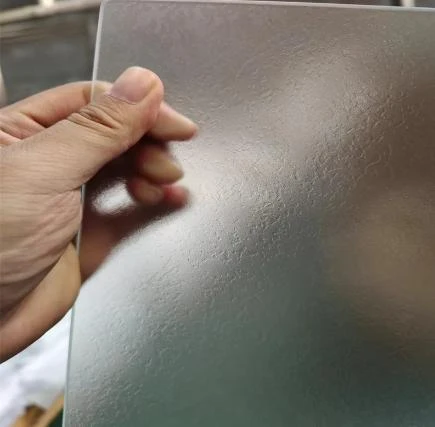Nov . 30, 2024 12:49 Back to list
Pricing Trends for Clear Float Glass in the Current Market
The Market Dynamics of Clear Float Glass Prices
Clear float glass, a ubiquitous material in construction, automotive, and various industrial applications, has been a significant topic for builders, architects, and manufacturers alike. Understanding its pricing dynamics is essential for informed decision-making within these industries. This article delves into the factors influencing clear float glass prices, recent trends, and their implications for various stakeholders.
Understanding Clear Float Glass
Clear float glass is produced by floating molten glass on top of molten tin, resulting in a smooth, even surface. This process grants it unique optical properties, making it ideal for windows, doors, and other applications where clarity and aesthetics are crucial. The demand for clear float glass is primarily driven by the construction sector, which relies heavily on glass for both residential and commercial buildings.
Factors Influencing Clear Float Glass Prices
1. Raw Material Costs The primary ingredients in clear float glass production include silica sand, soda ash, and limestone. Fluctuations in the prices of these raw materials can significantly impact glass prices. For instance, if the price of silica increases due to supply chain disruptions or mining regulations, manufacturers may pass on these costs to consumers.
2. Energy Prices The production of float glass is energy-intensive, relying on high-temperature furnaces that consume vast amounts of energy. Hence, variations in energy prices, such as natural gas or electricity, can affect manufacturing costs and ultimately the selling price of clear float glass.
3. Supply Chain Dynamics The global supply chain for raw materials and finished products plays a critical role in pricing. Disruptions caused by geopolitical events, pandemics, or logistical challenges can lead to shortages, driving prices up. For example, the COVID-19 pandemic caused delays and interruptions in production and shipping, creating pricing pressure.
4. Market Demand The construction industry’s health directly correlates with demand for clear float glass. A booming construction sector typically leads to increased demand, thereby raising prices, while a slowdown can have the opposite effect. Recent infrastructure spending initiatives in various countries have spurred demand, affecting market prices.
clear float glass price

5. Technological Advancements Innovations in glass manufacturing, such as energy-efficient production techniques or the introduction of new glass types, can influence pricing. For instance, if a new production method significantly reduces costs, it could lead to lower prices for clear float glass in the long run.
Recent Trends in Clear Float Glass Prices
In recent years, clear float glass prices have exhibited considerable volatility. Economic recovery post-pandemic has led to a surge in construction activities, thus driving demand for float glass. However, persistent supply chain challenges and rising raw material costs have constrained supply, creating upward pressure on prices.
Regions like Asia-Pacific have seen heightened growth in demand for float glass, particularly in emerging economies, which has also impacted global pricing strategies. Additionally, sustainability considerations are shaping the industry, pushing manufacturers to invest in eco-friendly processes, which can at times translate to higher initial costs for greener products.
Implications for Stakeholders
For stakeholders in the construction and manufacturing sectors, understanding clear float glass pricing is crucial for budgeting and strategic planning. Builders must account for potential increases in material costs, while manufacturers may need to adjust their pricing strategies in line with market conditions. Moreover, end consumers are affected too—higher glass prices can elevate overall construction costs, which may slow down project timelines or limit budgets.
Conclusion
Clear float glass remains an essential component of modern architecture and manufacturing. Its pricing is intricately tied to various factors, including raw material costs, energy prices, and market demand. Keeping abreast of these dynamics will be crucial for all stakeholders involved in the glass supply chain. As we look to the future, the industry's ability to adapt to challenges and innovations will play a vital role in shaping clear float glass prices in the years to come.
-
Safety and Style with Premium Laminated Glass Solutions
NewsJun.24,2025
-
Reinvents Security with Premium Wired Glass
NewsJun.24,2025
-
Premium Float Glass Line for Modern Architecture
NewsJun.24,2025
-
Low Emissivity Glass for Energy-Efficient Architecture
NewsJun.24,2025
-
High-Performance Insulated Glass Solutions for Modern Architecture
NewsJun.24,2025
-
Elevates Interior Style with Premium Silver Mirror
NewsJun.24,2025
Related PRODUCTS














